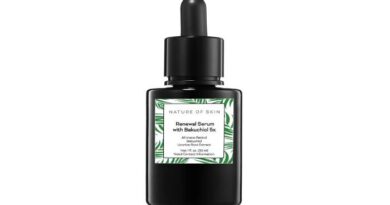What is PRP Treatment?
Platelet-rich plasma (PRP) treatment is a regenerative medical procedure that uses a patient’s own blood to promote healing, rejuvenation, and tissue repair. This innovative therapy has gained attention in recent years for its effectiveness in treating various conditions, including hair loss, sports injuries, and skin rejuvenation. By leveraging the body’s natural healing abilities, PRP treatment offers a minimally invasive solution with promising results.
How PRP Works: Understanding the Process
PRP works by harnessing the power of platelets, which are rich in growth factors. These growth factors play a critical role in repairing damaged tissues, reducing inflammation, and stimulating cell regeneration. When injected into the targeted area, PRP helps accelerate the body’s natural healing process.
Key Steps in PRP Therapy:
- Blood Collection: A small amount of blood is drawn from the patient, similar to a routine blood test.
- Separation: The blood is placed in a centrifuge, where it is spun to separate the platelets from other components like red and white blood cells.
- Activation and Injection: The concentrated platelets are activated and injected into the area requiring treatment, such as the scalp, joints, or skin.
How PRP is Prepared: The Step-by-Step Guide
The preparation of PRP is crucial to its success. Each step ensures the platelets are optimally concentrated for maximum effectiveness.
The Preparation Process:
- Blood Sample Collection:
- Typically, 10-20 millilitres of blood is drawn.
- The procedure is quick and minimally invasive.
- Centrifugation:
- The blood sample is processed in a centrifuge for about 10-15 minutes.
- This separates platelets, plasma, and other blood components.
- Platelet Concentration:
- The platelet-rich plasma is extracted and prepared for injection.
- It may be combined with other substances depending on the treatment type.
- Activation:
- Before injection, the PRP is activated to release growth factors.
Benefits of Proper Preparation:
- Ensures the PRP has a high concentration of platelets.
- Improves the treatment’s effectiveness.
- Reduces the risk of complications.
Applications of PRP Treatment
PRP treatment is versatile and used across various medical fields. Below are some of its most common applications:
Hair Restoration
- PRP is injected into the scalp to treat hair thinning and stimulate hair growth.
- It is particularly effective for androgenetic alopecia, commonly known as male or female pattern baldness.
Skin Rejuvenation
- Popular in cosmetic dermatology, PRP enhances skin texture, reduces fine lines, and improves overall complexion.
- It’s often used in combination with microneedling for better results.
Orthopaedics and Sports Medicine
- PRP injections are used to heal ligament injuries, tendon tears, and joint pain.
- Commonly treated areas include knees, shoulders, and elbows.
Wound Healing
- PRP aids in the healing of chronic wounds, especially in diabetic patients.
- Its ability to promote tissue regeneration speeds up recovery times.
Advantages of PRP Treatment
PRP offers numerous benefits that make it a preferred choice for many patients:
- Minimally Invasive: PRP uses the patient’s own blood, reducing the risk of allergic reactions.
- Safe and Natural: Since the treatment relies on natural processes, it’s free from synthetic chemicals.
- Quick Recovery: Most patients experience minimal downtime and resume normal activities soon after.
- Customisable: PRP can be tailored to address specific conditions, ensuring effective results.
Frequently Asked Questions About PRP
Is PRP Treatment Painful?
The procedure involves minimal discomfort as a thin needle is used for injections. Topical anaesthesia is often applied to reduce pain.
How Long Does a Session Take?
A typical session lasts between 45 minutes to an hour, including preparation and recovery time.
How Soon Can Results Be Seen?
Results vary depending on the condition treated. For hair restoration, noticeable improvements can take 3-6 months.
Are There Any Side Effects?
Mild swelling, redness, or bruising may occur but typically resolves within a few days.
Who Can Benefit From PRP?
PRP treatment is suitable for individuals seeking natural and effective solutions for:
- Hair thinning or loss.
- Skin rejuvenation and anti-ageing.
- Sports injuries or joint pain.
- Post-surgical healing.
However, PRP may not be recommended for patients with blood disorders, active infections, or certain medical conditions. A consultation with a qualified professional is essential to determine eligibility.
PRP Treatment: Precautions and Aftercare
Before Treatment:
- Avoid anti-inflammatory medications as they can interfere with the healing process.
- Stay hydrated and eat a healthy meal before your session.
After Treatment:
- Rest the treated area for at least 24 hours.
- Avoid strenuous activities or direct sunlight on the treated area for a few days.
- Follow your healthcare provider’s specific instructions for optimal results.
The Future of PRP Therapy
PRP continues to evolve, with ongoing research exploring new applications and improved techniques. From treating chronic pain to enhancing cosmetic procedures, its potential is vast. With advancements in technology, PRP is becoming more accessible and effective, offering patients a natural way to address a wide range of health and cosmetic concerns.
Why Choose PRP Treatment?
PRP treatment stands out as a safe, natural, and effective option for individuals seeking non-invasive solutions. Its ability to harness the body’s own healing mechanisms makes it a compelling choice across medical and cosmetic fields.
Final Thoughts
PRP treatment is a groundbreaking procedure that combines science and the body’s innate abilities to deliver remarkable results. Whether used for hair restoration, skin rejuvenation, or healing injuries, it’s an effective and versatile therapy. For those seeking a natural and minimally invasive option, PRP is worth considering. Accretion Portal provides reliable information and resources to help you make informed decisions about your health and well-being.




